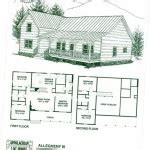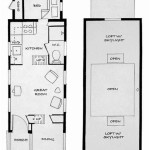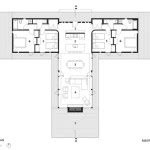Small trailer house plans provide detailed blueprints and specifications for constructing compact and mobile living spaces. These plans encompass the design and layout of tiny homes on wheels, offering a range of options to suit various lifestyles and needs.
From cozy weekend retreats to full-time residences, small trailer house plans empower individuals to create their own customized living spaces. By carefully considering floor plans, storage solutions, and material choices, these plans enable homeowners to optimize space and maximize comfort within their compact abodes.
In this article, we will delve into the intricacies of small trailer house plans, exploring the different types, design considerations, and construction methods involved. Whether you’re a novice builder or an experienced homeowner looking to downsize, this comprehensive guide will provide you with the knowledge and resources you need to embark on your tiny house journey.
Here are eight important points to consider when choosing small trailer house plans:
- Size and layout
- Building materials
- Insulation and climate
- Weight and towing capacity
- Storage and organization
- Plumbing and electrical
- Cost and budget
- Building codes and regulations
By carefully considering these factors, you can ensure that your small trailer house plan meets your specific needs and lifestyle.
Size and layout
The size and layout of your small trailer house are two of the most important factors to consider when choosing a plan. The size of your trailer will determine how much space you have to live in, and the layout will determine how you use that space. Here are a few things to keep in mind when considering the size and layout of your trailer:
- Overall size: The overall size of your trailer will determine how easy it is to tow and maneuver. If you plan on traveling frequently, you’ll want to choose a trailer that is relatively small and lightweight. However, if you’re looking for a more spacious living space, you may want to choose a larger trailer.
- Interior layout: The interior layout of your trailer should be designed to meet your specific needs. If you’re planning on living in your trailer full-time, you’ll need to make sure that it has enough space for sleeping, cooking, eating, and bathing. You’ll also need to consider how you’re going to store your belongings and how you’re going to use the space for entertaining guests.
- Traffic flow: The traffic flow in your trailer is also important to consider. You want to make sure that you can move around easily without bumping into furniture or appliances. You should also make sure that there is enough space for multiple people to move around comfortably.
- Storage: Storage is always at a premium in small spaces, so you’ll need to make sure that your trailer has enough storage space to meet your needs. You’ll want to consider both interior and exterior storage options.
Once you’ve considered all of these factors, you can start to narrow down your choices for small trailer house plans. There are many different plans available, so you’re sure to find one that meets your needs and budget.
Building materials
The choice of building materials is one of the most important decisions you’ll make when building a small trailer house. The materials you choose will affect the weight, durability, and cost of your trailer. Here are a few of the most common building materials used for small trailer houses:
Wood: Wood is a popular choice for small trailer houses because it is relatively lightweight and easy to work with. However, wood is also susceptible to rot and moisture damage, so it is important to choose a type of wood that is treated to resist these elements. Some of the most popular types of wood used for small trailer houses include pine, cedar, and redwood.
Steel: Steel is another popular choice for small trailer houses because it is strong and durable. However, steel is also heavier than wood, so it can affect the weight and towing capacity of your trailer. Steel is also more expensive than wood, so it is important to factor in the cost when making your decision.
Aluminum: Aluminum is a lightweight and durable material that is often used for the exterior of small trailer houses. Aluminum is resistant to rot and moisture damage, and it is also relatively easy to work with. However, aluminum can be more expensive than wood or steel, so it is important to factor in the cost when making your decision.
Insulation and climate
Insulation is an important consideration for any small trailer house, but it is especially important if you plan on living in your trailer in a climate with extreme temperatures. Proper insulation will help to keep your trailer warm in the winter and cool in the summer, which will make it more comfortable to live in and will also help to reduce your energy bills.
- R-value: The R-value of insulation measures its resistance to heat flow. The higher the R-value, the better the insulation. For small trailer houses, an R-value of at least R-13 is recommended for the walls and R-19 is recommended for the roof.
- Type of insulation: There are many different types of insulation available, including fiberglass, cellulose, and spray foam. Fiberglass is the most common type of insulation, and it is relatively inexpensive and easy to install. Cellulose is another popular choice, and it is made from recycled paper. Spray foam is a more expensive option, but it is also more effective at insulating than fiberglass or cellulose.
- Location of insulation: Insulation should be installed in the walls, roof, and floor of your trailer. It is also important to insulate any windows and doors.
- Vapor barrier: A vapor barrier is a material that is installed over the insulation to prevent moisture from entering the trailer. Moisture can damage insulation and cause mold and mildew to grow.
By following these tips, you can ensure that your small trailer house is well-insulated and comfortable to live in, no matter what the climate.
Weight and towing capacity
The weight of your small trailer house is an important consideration, as it will affect the towing capacity of your vehicle. The towing capacity of your vehicle is the maximum weight that it can safely tow. You can find the towing capacity of your vehicle in your owner’s manual. It is important to note that the towing capacity of your vehicle may be reduced if you are towing a trailer in mountainous or hilly terrain.
The weight of your trailer will also affect its fuel efficiency. A heavier trailer will require more fuel to tow, so it is important to choose a trailer that is the right size for your needs. If you are not sure how much your trailer will weigh, you can weigh it at a truck stop or RV park.
In addition to the weight of the trailer, you also need to consider the weight of your belongings. When packing your trailer, be sure to distribute the weight evenly so that the trailer is balanced. You should also avoid overloading your trailer, as this can be dangerous.
If you are unsure about the towing capacity of your vehicle or the weight of your trailer, you should consult with a professional. A professional can help you choose the right trailer for your needs and ensure that your vehicle is capable of towing it safely.
Storage and organization
Storage and organization are essential considerations for any small trailer house. With limited space, it is important to make the most of every nook and cranny. Here are a few tips for maximizing storage and organization in your small trailer house:
- Utilize vertical space: Vertical space is often overlooked in small spaces, but it can be a valuable resource for storage. Install shelves, cabinets, and drawers on the walls to store items that you don’t use on a regular basis. You can also use vertical space to store items in the bathroom and kitchen.
- Use under-bed storage: The space under your bed is a great place to store items that you don’t need to access on a regular basis. Invest in under-bed storage containers to maximize space and keep your belongings organized.
- Hang items on the walls: Hanging items on the walls is a great way to save space and keep your belongings organized. Install hooks, shelves, and pegboards on the walls to store items such as kitchen utensils, tools, and clothing.
- Use multi-purpose furniture: Multi-purpose furniture is a great way to save space and maximize functionality. For example, you can use a coffee table with built-in storage or a bed with drawers.
By following these tips, you can maximize storage and organization in your small trailer house and create a more comfortable and functional living space.
Paragraph after details:
In addition to the tips above, here are a few other ideas for maximizing storage and organization in your small trailer house:
- Use stackable containers: Stackable containers are a great way to maximize space and keep your belongings organized. You can use stackable containers to store clothes, food, and other items.
- Use clear containers: Clear containers allow you to easily see what is inside, which can save you time when you are looking for something.
- Label your containers: Labeling your containers will help you stay organized and find what you need quickly.
- Declutter regularly: Decluttering regularly will help you keep your trailer house organized and free of unnecessary items.
By following these tips, you can create a more organized and functional small trailer house that is a pleasure to live in.
Plumbing and electrical
Plumbing and electrical systems are essential for any small trailer house. These systems provide water, electricity, and sanitation, which are necessary for comfortable and safe living. Here are a few things to consider when planning the plumbing and electrical systems for your small trailer house:
- Water supply: The water supply for your small trailer house can come from a variety of sources, including a municipal water system, a well, or a rainwater collection system. It is important to choose a water supply that is reliable and meets your needs.
- Water heater: A water heater is necessary to provide hot water for your small trailer house. There are a variety of water heaters available, including electric, gas, and propane models. Choose a water heater that is the right size for your needs and that is compatible with your water supply.
- Water fixtures: The water fixtures in your small trailer house include the sinks, faucets, and shower. Choose water fixtures that are durable and easy to clean. You may also want to consider water-saving fixtures to reduce your water consumption.
- Electrical system: The electrical system in your small trailer house provides power for your appliances, lights, and other electrical devices. It is important to have a properly designed and installed electrical system to avoid electrical fires and other hazards. The electrical system should include a circuit breaker panel, wiring, and outlets.
By following these tips, you can ensure that your small trailer house has a safe and reliable plumbing and electrical system.
Cost and budget
The cost of building a small trailer house can vary depending on a number of factors, including the size of the trailer, the materials used, and the complexity of the design. However, it is possible to build a small trailer house for a relatively affordable price. Here are a few tips for saving money on your small trailer house build:
- Choose a smaller trailer: The size of your trailer is one of the biggest factors that will affect the cost of your build. A smaller trailer will require less materials and labor to build, which will save you money.
- Use affordable materials: There are a variety of affordable materials that can be used to build a small trailer house. For example, you can use wood siding instead of metal siding, and you can use laminate countertops instead of granite countertops.
- Simplify the design: A complex design will require more time and labor to build, which will increase the cost of your build. Keep your design simple and efficient to save money.
- Do some of the work yourself: If you have the skills and time, you can save money by doing some of the work yourself. For example, you can install the plumbing and electrical systems yourself.
By following these tips, you can save money on your small trailer house build and create a beautiful and affordable home.
Paragraph after details
In addition to the tips above, here are a few other things to keep in mind when budgeting for your small trailer house build:
- Permits and fees: You may need to obtain permits and pay fees to build your small trailer house. The cost of permits and fees will vary depending on your location.
- Insurance: You will need to purchase insurance for your small trailer house. The cost of insurance will vary depending on the type of insurance you choose and the value of your trailer house.
- Unexpected costs: There are always unexpected costs that can arise during a build. It is important to have a contingency fund in place to cover these costs.
By carefully considering all of these factors, you can create a realistic budget for your small trailer house build and avoid any unexpected financial surprises.
Building codes and regulations
Building codes and regulations are important considerations for any small trailer house build. These codes and regulations ensure that your trailer house is safe and habitable. Here are a few things to keep in mind when considering building codes and regulations for your small trailer house:
- Local building codes: Local building codes vary from place to place. It is important to check with your local building department to determine what codes and regulations apply to your small trailer house build. Local building codes may include requirements for things such as the size of your trailer, the materials used, and the plumbing and electrical systems.
- RVIA certification: The RV Industry Association (RVIA) is a national organization that sets standards for the construction of recreational vehicles. RVIA certification is not required by law, but it is a good way to ensure that your small trailer house is built to a high standard of quality. RVIA-certified trailer houses must meet a number of safety and construction standards, including requirements for things such as the chassis, the body, and the plumbing and electrical systems.
- ANSI standards: The American National Standards Institute (ANSI) is a non-profit organization that develops standards for a wide range of products and services. ANSI standards are not required by law, but they are widely recognized and respected. There are a number of ANSI standards that apply to the construction of small trailer houses, including standards for things such as the design of the chassis, the installation of plumbing and electrical systems, and the use of materials.
- NFPA standards: The National Fire Protection Association (NFPA) is a non-profit organization that develops standards for fire safety. NFPA standards are not required by law, but they are widely recognized and respected. There are a number of NFPA standards that apply to the construction of small trailer houses, including standards for things such as the installation of smoke detectors, the use of fire-resistant materials, and the design of emergency exits.
By following building codes and regulations, you can ensure that your small trailer house is safe and habitable. You can also avoid costly delays and fines.










Related Posts








